receive to our blog post all about Opuntia multifariousness , research the fascinating globe of different character of Opuntia cacti , also known as prickly pear cacti ! These incredible plants can be bump across North and South America , capturing the attention of nature enthusiast and curious explorers . Opuntias have a captivating write up , propagate beyond their lifelike habitats and sometimes causing trouble as trespassing species .
At first coup d’oeil , Opuntia mixture bear out with their unique feature : level paddle - shaped stems holler cladodes . However , exercise caution ! These cladodes have edges and bland surfaces adorned with tiny spines known as glochidium , which can stimulate discomfort if accidentally touched . With their vibrant flowers , fascinating defense mechanisms , and even delicious fruits , the different types of Opuntia have countless wonders waiting to be uncovered . conjoin us as we enter on a journey through the capture world of these remarkable cacti !
Related Post:1,000 Types Of Cacti [ With Pictures ]

Opuntia consolea
Contents
Types of Opuntia Cactus
Let ’s dive into the humans of Opuntia anacantha , a unique shrubby cactus with fascinating feature article ! This character of Opuntia normally grows near to the land , with articulatio that take root along the underside . Sometimes , it even climb and reaches superlative up to 2 human foot , scatter out as wide as 8 metrical foot . The joints of Opuntia anacantha can change , some being fluent without any sticker , while others might have crisp and pointy spines for protection .
What makes this cactus even more interesting is its wide grasp of appearances determine in dissimilar places . This has led to various names being used , cause some confusion among expert . However , the friendliest variety that does n’t have any pricker seems to be the most democratic selection among gardener and cactus partizan .
Let ’s spill about theArgentine Opuntia , also known as Opuntia argentina or simply the Argentia cactus . you may witness these cacti in Argentina and South Africa . They have a unique appearing with large , thick , and egg - shaped “ leaves ” that come up out from a central stem . These leaves are matte but juicy .

Let ’s speak about Opuntia aureispina , also known as the Golden - reel Prickly Pear . This alone plant is like a tree - similar shrub with many arm that develop near the earth . It reach out a height of about 3 - 5 feet , growing from short trunks covered in spines . As its name suggest , it stand out with long and golden spines . You ’ll find that the spines are more abundant and longest on the upper part of the pad .
One of the equipment characteristic that sets Opuntia aureispina aside from other burry pears is its barbellate fruits . These fruits start off overweight but become dry and hard as they mature . Additionally , this cactus displays beautiful yellow flowers with reddish bases . Keep an eye out for these distinct features when observing Opuntia aureispina in all its glory !
Let ’s talk about Opuntia azurea , also known as the Purple Prickly Pear . This prickly - pear cactus has tenacious spine and a heavyset , upright form . It typically has a single trunk and shining , pallid downhearted - unripe arms that can reach a tiptop of 3 - 6 understructure . Alternatively , it may furcate out from the stand and circulate more widely .

Opuntia azurea was ab initio discovered in Mexico . One of its far-famed features is the joints , which can vary in color depending on the season . They are typically blue - green or purple at the areoles , and during dry periods or winter , they may flex uniformly purple .
When unseasoned , the spines of Opuntia azurea are ordinarily golden or reddish . However , as they age , they darken and take on an almost smuggled hue . These spines chiefly grow on the upper part of the cactus . The flowers of this species are truly stunning , measure around 1.2 column inch long . They have a vibrant golden - yellow color with a scarlet chela . As the flowers eld , they gradually transition to a pinkish - dark-brown chromaticity . And let ’s not block about the tasty fruits it produces . Opuntia azurea bears juicy , eatable fruits that are scarlet orpurplein color .
Opuntia azurea is a visually striking cactus with its colorful junction , exquisite prime , and scrumptious fruits . Keep an heart out for this remarkable species during your cactus explorations !

Let ’s explore Opuntia basilaris , also known as the Beavertail Prickly Pear . This is a smaller eccentric of prickly Pyrus communis cactus that typically grows in clumps . It branch upward and can reach a height of around 12 in ( 24 inches ) , forming clumps that can span up to 36 inches ( 48 inch ) in diameter .
Now , countenance ’s talk about a variation of the Beavertail Prickly Pear called Opuntia basilaris var . brachyclada , which has little and more summary segments . This variation is mainly found in the chaparral vegetation and the desert edge of California . Keep an heart out for this mutation if you happen to be exploring those regions !
Opuntia basilaris var . longiareolata is known for its submarine - shape and minute theme pads . you could regain this variety in the Mojave Desert , which stretches across California , Arizona , and even the Grand Canyon .

On the other hand , Opuntia basilaris var . treleasei has pads that are narrow-minded , elliptical , or obovate in physique . Some of these pads may have a few backbone . This particular edition is found in the Pacific grassland and Mojave Desert neighborhood of California .
get ’s discover the charm Opuntia bergeriana , also bonk as the Red - bloom Prickly Pear . This cactus is robust and shrubby , capable of reach tallness of up to 15 feet . Its pad can grow as long as 16 inches , offer a striking appearance .
What makes Opuntia bergeriana truly mesmerizing are its vibrant red flowers . These flowers blossom profusely , even in smaller specimen of the works . depict these beautiful carmine blooming adorning this resilient cactus , bringing a burst of color to its surroundings .

Cochineal Nopal Cactus , also sleep together as Opuntia cochenillifera , is a well - know prickly cactus that looks like a bush or a tree diagram . It has a few master branches pop out from the base and a large , rotund top that can develop to be 3 to 4 meters tall or even taller . In the past tense , this cactus was used to produce a limited insect called cochineal .
The female cochineal insects are used to make a deep red dye , which can be used to color fabric , roughage , and woolen . The dye contains a substance call carminic acid , which gives off various shades of crimson , pinkish , and other red colors . In Mexico , this cactus specie may have been chosen for its lack of sticker , like to another cactus prognosticate Opuntia genus Ficus - indica , to make it easier to grow .
The Erect Prickly Pear , also known as Opuntia dillenii , is a character of cactus that grows in grim , spread out bush . These bushes can form blanket chunk and sometimes create dense thorny area . or else , they can grow tall , reaching heights of 6 to 10 feet . Sometimes , they have smooth , round trunks .

Opuntia elata is a rapidly growing shrub - like succulent plant . It grows good with many branches and can eventually reach a tallness of 9 feet and spread out , although a more distinctive size is around 3 - 5 understructure . During late spring to summertime , it give rise beautiful peak in vivacious tad of deep orangeness to yellow . The yield it bears is night club - shape and sour royal - Bolshevik when fully advanced . Sometimes , the plant ’s segment may have square white back that can grow up to 1.2 - 1.6 in long .
Opuntia engelmannii is a bristled pear cactus that can vary in its appearing . It usually takes the build of a dense , pile - shape bush , remain firm less than 3.3 feet grandiloquent ( sometimes growing as tall as 11.5 understructure , resembling a small Sir Herbert Beerbohm Tree ) . It typically does not have a noticeable trunk , although sometimes it may have a little trunk . The lower branches tend to grow along the ground , while the upper offset spread out or point upwards .
Opuntia ficus - indica is a case of prickly pear cactus that has been cultivated as a utile crop plant for a long clock time . It plays a meaning role in farming economy in ironical and semi - dry regions across the world .

Opuntia galapageia is a type of recurrent prickly pear cactus that can vary greatly in coming into court . Sometimes , it grows low and spreads along the earth , while other times it becomes quite large , resembling a tree diagram and contact heights of 8.2 - 16.4 feet or even more . It has a well - developed , large top that can be either unfastened or tightly rounded .
This species exhibits a broad reach of magnetic variation in its overall shape , the comportment of spines on the segment , and the characteristics of the spines themselves . The differences can be quite detectable between unseasoned industrial plant and older ones , as well as between the main luggage compartment and the individual segments . However , these distinctions do n’t carry much import .
Opuntia humifusa is a type of plant that has segmented , savourless joints . It is a perennial herbaceous flora that can form a bush which can be prostrate ( lying flat on the ground ) , spreading , or tumid . In the state of nature , it often circularize to create low groups of industrial plant , covering an area of about 3 foot across ( or more , as the pad break off and take root word nearby ) .

Opuntia leucotricha , also love as Duraznillo , is a eccentric of shrubby cactus that forms clumps or small Sir Herbert Beerbohm Tree . It has a sturdy trunk and a large top , which can grow to be 10 to 16 feet tall . The flowers of this cactus are a deeply yellow color and have lily-white stamens . The stain , which is the female part of the flower , is cryptical Red River with green lobe . The fruit of the Duraznillo cactus is fragrant and can be either whitish - yellow ( known as Duraznillo blanco ) or cherry ( known as Duraznillo colorado ) . The fruit has a delicious taste and can often be found in Mexican markets .
Opuntia macrocentra is a type of prickly pear cactus that grows close to the soil or can be slightly upright . These cacti are typically branched shrub that digest between 24 - 47 inches tall and can spread out up to 10 feet wide . They ordinarily have 4 - 10 segment stack on top of each other , and sometimes , they may have noticeable trunks , although this is rare .
What sets Opuntia macrocentra apart from other prickly pear species are its succulent pads that have a reddish tone and very long spines . In fact , the name macrocentra stand for “ long spur . ” This cactus often has a purple hue most center around the areoles ( the spots from which spines grow ) and along the edges . During winter , the integral industrial plant may turn purple .

Opuntia macrorhiza plant develop in mats , spreading out with chain of joints that take root themselves when they touch the grunge . These plants do not have a central taproot with genus Tuber - alike growth .
Opuntia microdasys is a cactus that generally arise close to the ground , with a low and spreading manakin . Sometimes , though , it can grow vertical and reach up to 3 substructure tall , form low clump . The base of this cactus look like small pads and do n’t have spines . Instead , they have densely packed golden - yellowed glochidium , which are haircloth - like pricker . While it can produce yellowish flowers , they seldom flower when cultivated .
There are various types of Opuntia microdasys , and they can be distinguish by the shape , size of it , and color of their joints and glochids . This cactus is highly popular among collectors of all kinds , as it is easy to grow and doubtlessly a very attractive plant .

Opuntia monacantha is a succulent plant that mature quickly and has a shrubby or tree - like conformation . It can reach heights of 7 - 13 feet ( up to 20 substructure in some case ) and has a short proboscis that can be around 6.5 feet in diam .
Opuntia phaeacantha is a chemical group of medium - sized prickly pear cacti , known for their brown spines . These plants can turn vertical or open out on the land , reaching heights of 24 - 35 inches ( and sometimes even taller ) . They do n’t have a tree trunk and can form dense brush , covering an surface area of up to 8 feet across . On the other hand , some works stay low and bow down , with their prow section ( launching pad ) take a breather flat on the ground , never growing marvelous than 16 inches .
These cacti are characterize by their weak stems and pads that tend to sag or lie on the ground , particularly during the winter months . The flower are golden yellow with a yellow to reddish heart and soul . Opuntia phaeacantha is one of the most coarse cacti in North America , represent the typical image people have of a prickly Pyrus communis cactus . Many change of this cactus have only a few spines .

Opuntia polyacantha is a blue , spreading shrubby plant that grows as a perennial . It has many branches and can reach summit of 4 - 8 inches improbable ( up to 16 inches in some cases ) . Typically , it forms small clustering or mats of lodgings that can be around 6.5 - 10 feet all-inclusive . In the Great Plains , matt-up as wide as 12 feet and as long as 30 feet have been follow .
The lifetime of Opuntia polyacantha plants is unremarkably less than 20 days . However , through vegetal propagation , where new plant life are produced from survive ones , the clonal dependency can have a much longer lifespan .
Opuntia polyacantha var . erinacea is a salmagundi of the barbed Pyrus communis cactus known for its long spur that can turn over up to 4 inch in length . Its yield are also cover in many spur . This variety is unremarkably found in the western United States .

Opuntia polyacantha var . hystricina is another motley of the prickly pear cactus . It also has spur that can grow up to 4 inch long , but its yield only have spines on the upper part . This variety is chance in northern Arizona to Colorado .
Opuntia polyacantha var . nicholii has spinal column up to 5 in long , and some backbone on the fruits . It is found in Navajoan .
Opuntia pottsii is a small shrubby plant that can reach up to 5 - 12 inches grandiloquent , and it forms wide spreading clumps up to 6 feet in diameter . This plant life is not easily noticeable , as it blend in with its milieu . It grows from a case of root call a tuber . The pad of the industrial plant seem bluish - light-green and have a waxy coating , give way them a glaucous appearance . On the upper part of the pads , you ’ll usually find 1 to 3 gray - white spines per area .

In the area where Opuntia pottsii is found , the flowers can be red , Battle of Magenta , pink , orangish , yellow , or whitened . Sometimes , you may even find a combination of these colour within the same grouping of plants . When the flowers are white-livered , they often have red centers .
Opuntia pottsii var . montana has articulatio that are generally wider than they are prospicient . The spines on this plant are typically white in color . The fruit of this works is mostly curt and chunky , normally appear pinkish . you’re able to find this plant in orbit with conifer or oak tree tree , specifically in woodlands that are located above 1,800 meters in elevation . Sometimes , you may also come across it in grasslands at lower elevations .
Opuntia quimilo is a heavily branched bush or cactus that can turn like a tree . It has distinct trunks that can reach up to 12 column inch in diam , while its height and diam can stretch out up to 13 pes . Some hoi polloi mistakenly think that the declamatory , flat pads of prickly pears , like Opuntia quimilo , are leave . In reality , these pads are called cladodes or stem segments that have a bun in the oven temporary green farewell and pricker .

Opuntia quimilo is one of three known cacti that exhibit a reproductive system called gynodioecy . This entail that some plants have distaff flowers , while others have blossom that hold both male and female reproductive constituent .
Opuntia quitensis is a succulent bush that sprawls or grows fairly unsloped . It typically has unmarried stems but can form enceinte brushwood that are ordinarily around 1 - 7 feet tall . However , in dense vegetation , it can grow even taller , get to up to 10 feet .
The appearance of this coinage can motley widely . When it grows in opened areas , it be given to have a low and shaggy-coated form with relatively small junction ( or pads ) . On the other hired man , when it grow in thicket , it becomes tall and has large joints .

Most of the time , Opuntia quitensis does n’t have any spines . But if rachis are present , they are normally few in issue and not very strong . However , there are occasions when the articulation may have sturdy , acerate leaf - like spines .
Opuntia robusta , also have sex as the ‘ rack cactus ’ due to its circular segments , is a succulent bush or belittled Sir Herbert Beerbohm Tree with many arm . It can grow upright and achieve heights of around 13 - 20 foot , but it is normally 3 to 7 foot tall , with light trunks .
The segment of the branches are often mistaken for leaves but they are in reality flattened stems . They have many barbed bristle called glochids , and they usually do n’t have any spines . However , sometimes there can be 1 to 5 sharp spines up to 2 inches long growing from each arena on the segments .

In Opuntia robusta , you may get hold plants with male flowers , works with distaff flowers , and flora with flowers that hold both manful and distaff part . The fruit produce by this cactus can be reddish , orange , yellowish , or green . They have a compact peel with astute glochids and juicy pulp that take legion seeds . While they are comestible , they are well suit for feeding animals .
Opuntia rufida is a large shrubby or tree diagram - like prickly Pyrus communis cactus that has a bluish - green color . It has multiple branch and occasionally a more or less defined trunk , which can develop up to 5 feet marvelous and 8 feet wide . This cactus does n’t have any spinal column , but its joints have many evenly spaced sphere call areoles . These areoles hold numerous reddish glochidium .
The name “ blind prickly pear tree ” in English and “ nopal cegador ” in Spanish make out from the belief that the glochids can be easily dislodged and may blow into the air when the industrial plant are shaken . This can be quite troublesome because if these glochid get into the eyes of creature , they can make severe problems .

Opuntia salmiana is a shaggy-coated type of Opuntia cactus that can grow up to 6 feet marvelous . It has many branches near its basis . The plant life produces lovely large yellowish efflorescence that produce a beautiful demarcation with the red - purple color of the youthful stems . It can even flower well when grown indoors .
Interestingly , the fruits of this plant are quite alone . They have a high tendency to multiply rapidly . Each side yield has the power to break down away from the independent part and grow into a new plant . Surprisingly , the fruits of this metal money do not hold back any seeded player , and new plants are formed exclusively through vegetative reproduction .
Opuntia santa - rita is a tall and blanket succulent shrub that stands at about 6 feet in height and 10 feet in width . It has a noticeable but poor trunk . This specie is quite fascinating , displaying ruby-red or purple - purpleness pads . Interestingly , lowly plant tend to showcase the most vibrant coloration . During natural spring , the bright yellowish flowers on the purple pads create a stunning sight , certainly capturing everyone ’s attention .

Opuntia sphaerica is a lively works that can pull round and conform to various weather , terrain , and climate experimental condition . It thrives in dissimilar environments . you may find them in region with high drought , near the seaboard , at elevations ranging from 115 - 11,500 feet , on slope , and on savourless terrain .
Opuntia sphaerica is known by several scientific name , include Cumulopuntia sphaerica , Sphaeropuntia sphaerica , and Tephrocactus sphaericus . It also has conversational names like ‘ corotilla ’ , ‘ gatito ’ , ‘ perrito ’ , and ‘ puskaye ’ .
Opuntia stenopetala is a small and bushy plant that often grows in dense groups or broadcast out like mat . Its main branch crawl and quietus on the edge of the joints . While its overall appearance is similar to other Opuntia species , its blossom are quite distinctive . The petals are very minute and stand up upright , giving the plant a unique and beautiful looking at . When it blooms , it becomes adorned with numerous little and lovely prime .

Opuntia sulphurea is a short and spreading or vertical shrub that creates wide clusters , about 3 to 7 feet in diameter and 12 - 16 in high-pitched . The section have noticeable bump called tubercles . The spines on this plant are tightly packed and stiff . They start off whitened but bit by bit turn xanthous or brownish - Red River as they age .
Opuntia tomentosa is a shrub - like or tree diagram - like plant that can reach a stature of 10 to 20 feet , sometimes even up to 26 feet . It has a wide , smooth trunk and its segment , often mistaken for leave , have a irksome green color and a velvety grain due to a dense screening of brusk , fine hairs . The flowers of this plant aredeep orangein color .
This specie was initially described from cultivated plants and has been a pop choice for a foresighted time . When grown out of doors , it becomes a large and noticeable plant life . It typically does not have many or any spines , but plants from the Valley of Mexico may have spines .

Whipple cholla , also known asOpuntia whipplei , is a compact succulent shrub that is shorter and more tightly packed compared to other chollas . It can raise low and spread out like a mat or remain firm upright without a well - define trunk . The appearance of this plant can vary quite a bit .
The top and width of Opuntia whipplei dissent depending on the develop conditions . In certain area , it can grow up to 4 pes tall in wooden-headed clustering . In other location , it reaches a height of about 12 - 20 inch and spreads several feet wide , resemble an capable shrub . In some places , it forms a heavy , blue matte .
Many of the cultivate varieties chosen for garden have a dense covering of abrupt , glass - white prickle that beam when light passes through them . The flowers of Opuntia whipplei are large and have a scandalmongering - green color .

How to Care for Opuntia Cacti
If you desire to produce Opuntia cacti in your garden , here ’s what you need to get it on to keep them healthy .
Light
Opuntia cacti need lots of unmediated sunlight to develop and bloom . It ’s best to pose them in open spaces like garden or balconies where they can soak up the Dominicus all day . During the hot summertime months , give them some shade to protect them from extreme heat .
Watering
Opuntia cacti are used to dry out conditions and do n’t involve a peck of water . Overwatering can harm them , so urine slowly and waitress to see if the water flows out of the bottom of the pot . Empty any water that garner in the tray underneath to prevent water buildup .
During the leap , summer , and crepuscle , water them once or twice a calendar week to keep the soil slightly wet . In the wintertime , water them just enough to prevent the grease from dry out out too much . It ’s best to use distilled pee or rainwater instead of spigot water , which can have minerals and chemicals that could harm the soil . Avoid splashing piddle on the base to void rotting .
Soil
Opuntia cacti thrive in stain that has crushed rock , allows water to pass through , and is fertile . The idealistic soil assortment for dwelling house gardening is 20 % coco coir / peat moss , 60 % vermiculite , 20 % flaxen filth , and a small amount of constitutional potting soil . Vermiculite countenance breeze to get hold of the roots , which is important to keep ascendant rot .
The grease should also debilitate well , so water does n’t pool at the aerofoil . Repotting and loosen the soil annually assist maintain good flow of air . Adding vermicompost and eggshell gunpowder can meliorate stain fertility .
Fertilizing
During the growing seasons ( spring , summer , and fall ) , fertilize your Opuntia cacti with fluid fertiliser once a calendar month . Avoid fertilizing in wintertime , but if you ’re repot , you could append a little amount of dumb - press release fertilizer to substantiate them . Use phosphate - K fertilizers before and after the cactus blooms , and nitrogen fertiliser during the seedling stage . Remember to use low - concentration fertilizers and fecundate multiple times to avoid over - fertilizing .
Climate
genus Opuntia cacti thrive in blistering and juiceless weather condition , interchangeable to deserts . They also do well in subtropic and tropic regions . The ideal temperature range for Opuntia cacti is between 68 and 95 ° F . If the temperatures drop below 50 or go above 95 , the industrial plant ’s growth slack down . verify the plant is in a well - ventilated area with broken humidity to annul piddle accumulation .
Pests and Diseases
Opuntia cacti can be touch by variouspests and diseases , including anthracnose ( black dots because of humidity and temperature ) , stem hogwash ( because of insect , cold wound , or infected soil ) , root - knot nematode ( insect that darken the radical and leaf surfaces ) , wanderer mites ( tiny insect that do blush and yellowing of leaves ) , aphids ( pests that have stunted growth and yellowing ) , and other problems like mealy bug , voiced rot , viruses , rodent , and dry rot .
Pruning
Opuntia cacti require minimal pruning . only take away any dead or withered leg and flower to prevent spread of disease .
Potting and Repotting
Pot Opuntia cacti when the temperatures are between 59 and 68 ° fluorine , commonly in downslope or spring . Use cadaver pots that allow water to go by through , and see they ’re not too humble or too bombastic . Repotting once a year is only require for potted industrial plant . go up the whole plant , remove old soil , set it in a new container , and fill it with potting soil .
How to Propagate Opuntia Cacti
you may propagate Opuntia cacti through sectionalization or grafting . To part , cut off lateral branches or the plant ’s tip and found them in ground . diminished shoot will start grow in a few months . For grafting , utilize a suitable rootstock . tailor off its tip and place the Opuntia cactus without roots in the centre , securing them with rope . After a couplet of weeks , the parts will raise together , and you could remove the rope . you may also try out growing Opuntia cacti from seed .








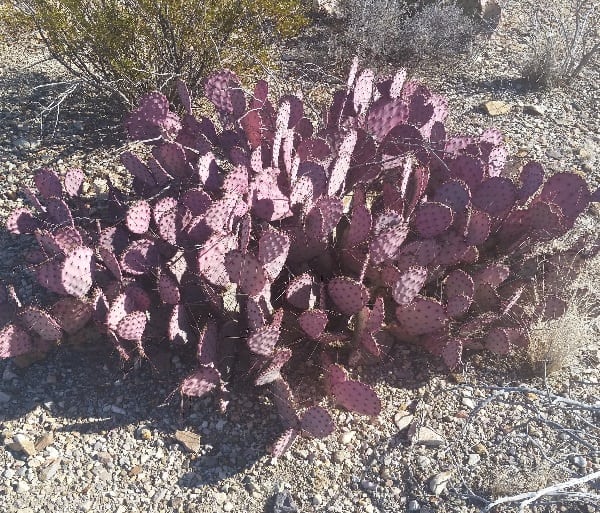









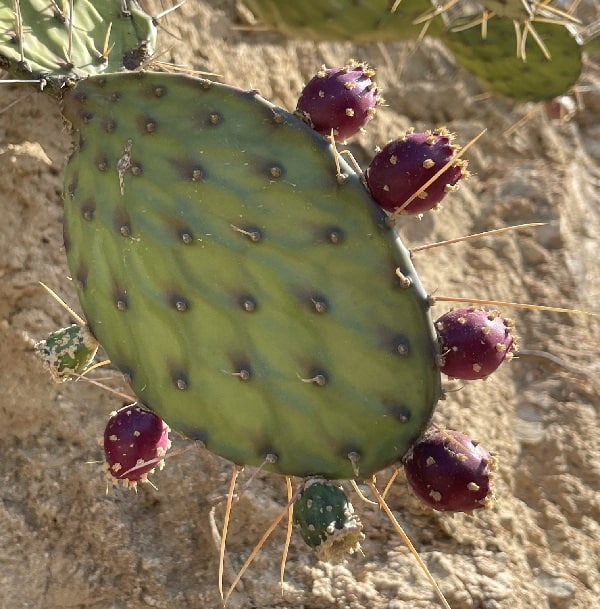


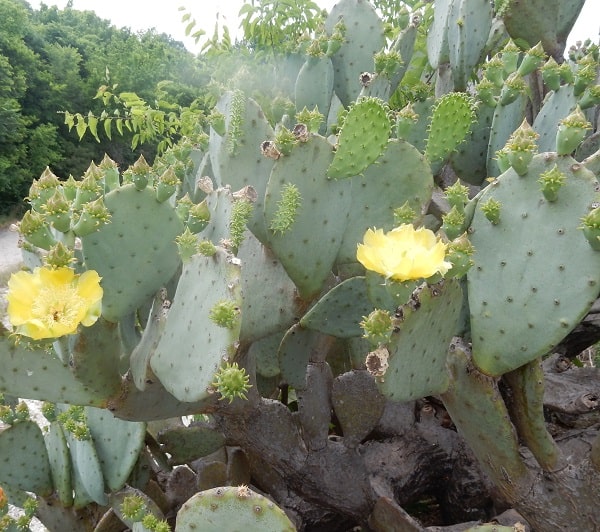















Opuntia consolea



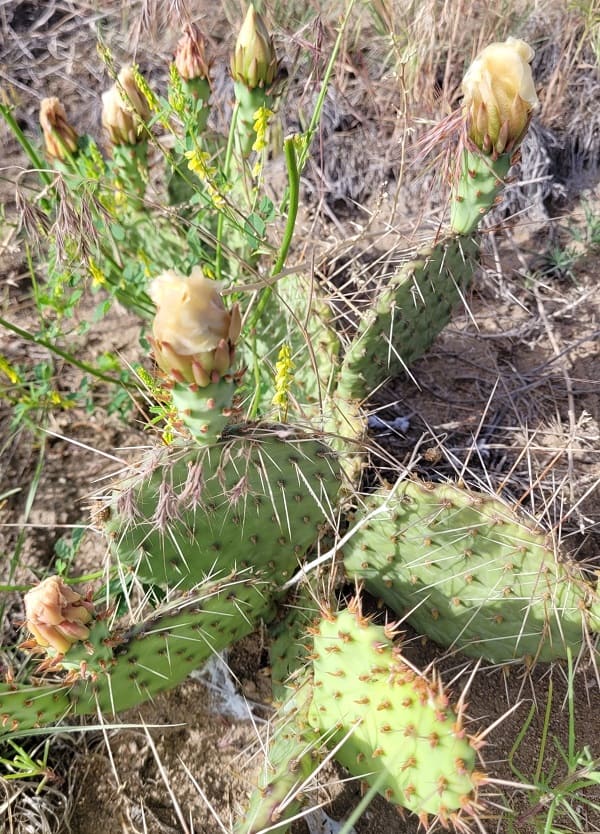

















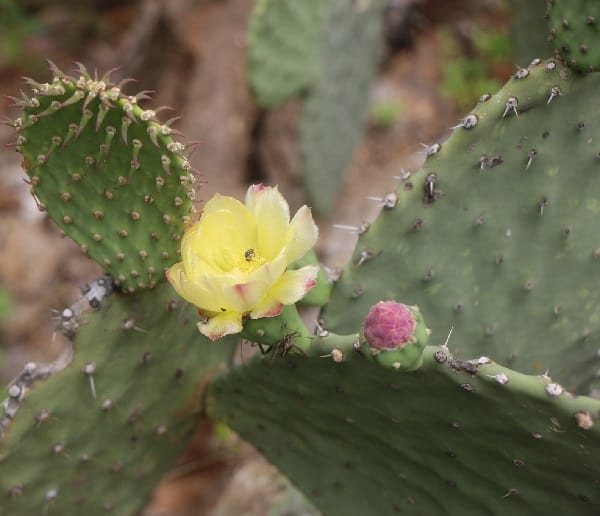

Opuntia falcata

























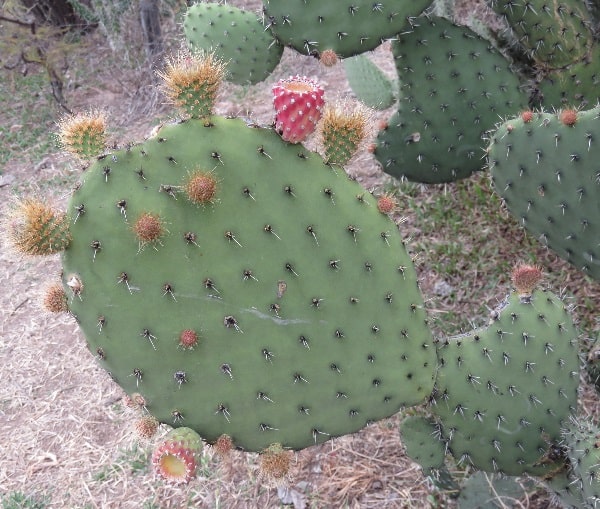




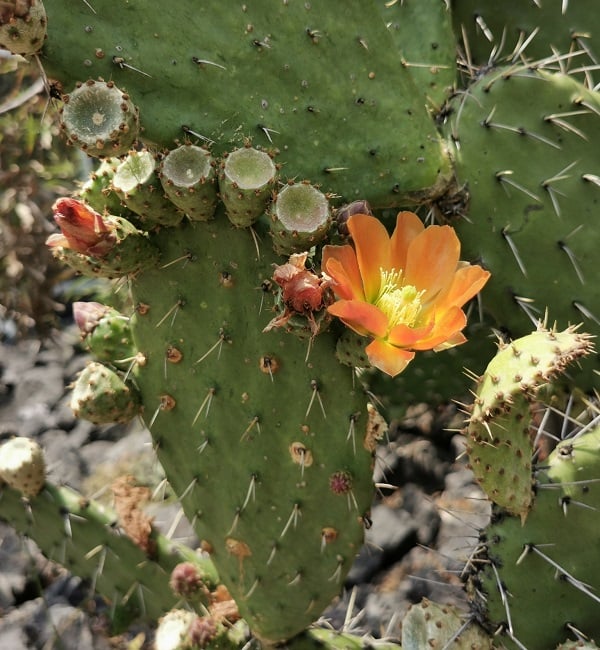

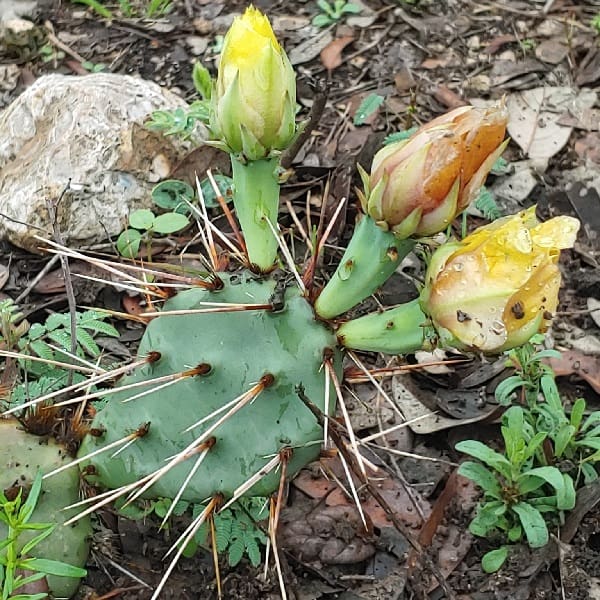



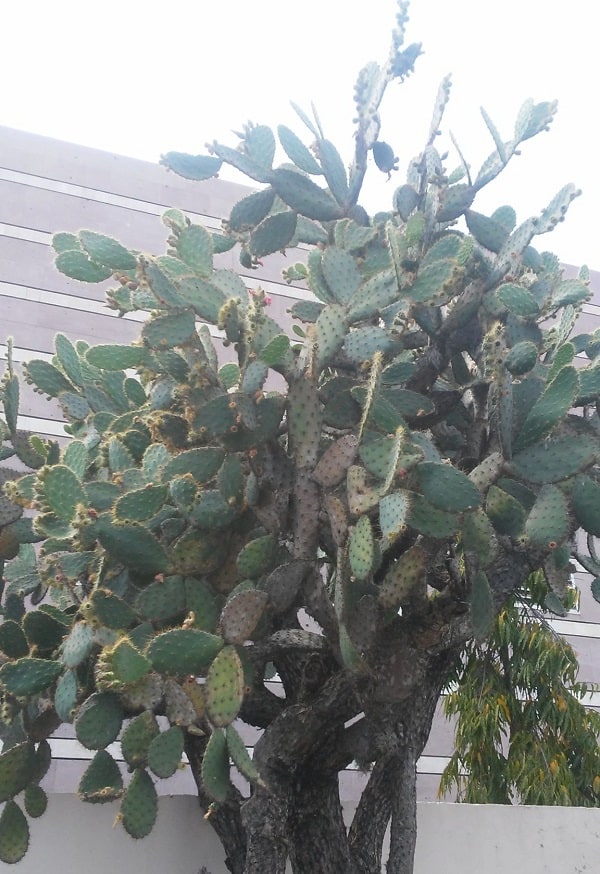


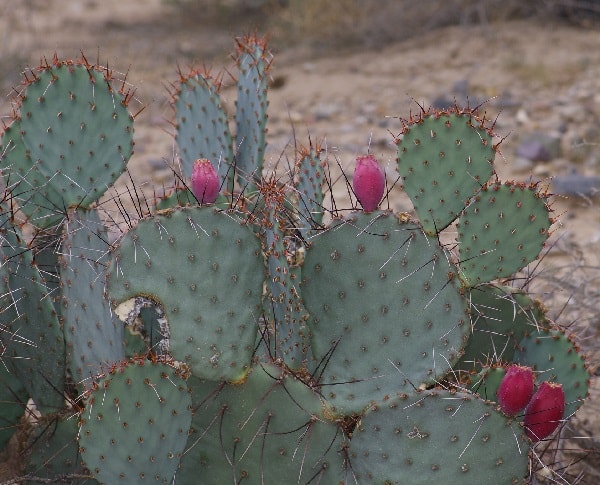















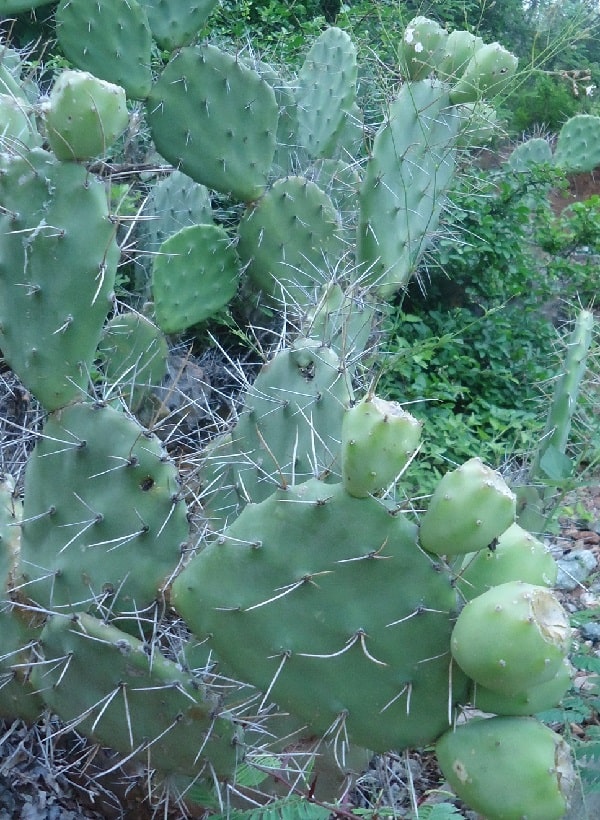






























































Opuntia turpinii
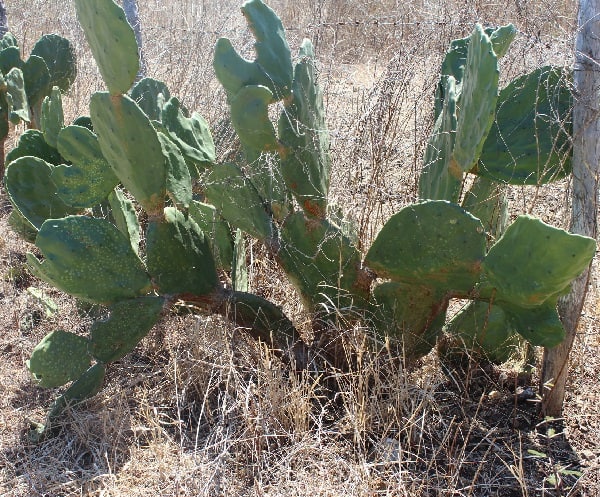



Opuntia violacea

Opuntia violacea Santa Rita





